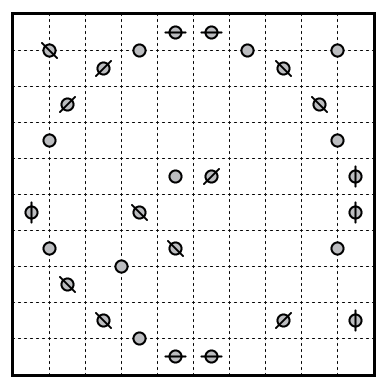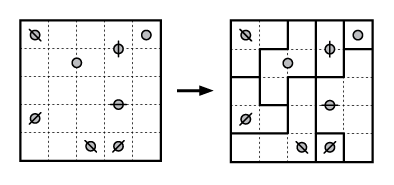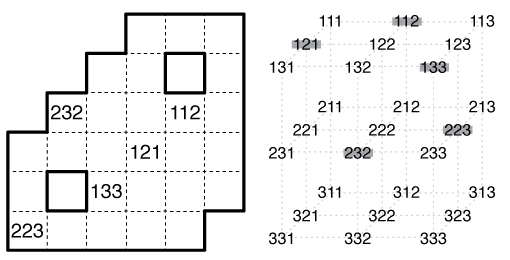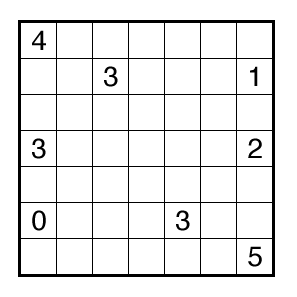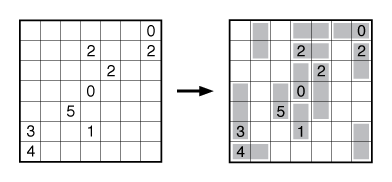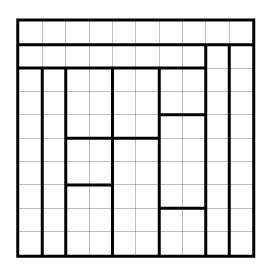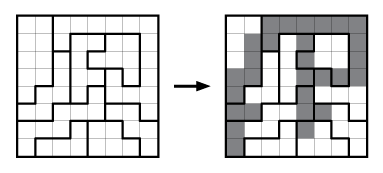Surf by Izak Bulten
This week we are sharing easy sample puzzles from our ebook The Puzzlemasters’ Workshop which showcases six authors exploring new puzzle styles or variations with 8-10 challenges in each section. Today’s post is Surf.
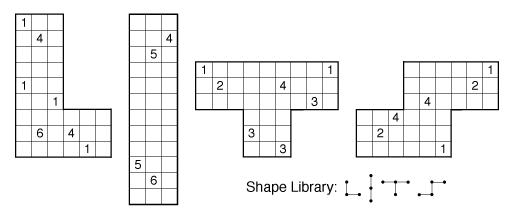
or solve online (using our beta test of Penpa-Edit tools; use tab to shift between shading mode and the linex mode where left click+drag draws lines and right click marks X’s)
Theme: LITS
Background: Shading/object placement puzzle style created by Izak Bulten in 2015 and now more fully explored in this book. Surf was inspired by Nurikabe islands and LITS paths. Along with Turf, which is the next book section, Surf is an exploration of bicolor shading logic that can yield fruitful patterns.
Rules: Shade some white cells black so that the grid is divided into white and black regions. Cell with numbers cannot be shaded. Each white region must contain exactly one number and have the same area in cells as that number. Two white or two black regions may only touch diagonally. Each black region must be exactly specified by one shape graph given below the grid, where graph edges represent one-cell-wide straight paths with variable lengths, and graph nodes represent ends, turns, and branch points. Graphs can be rotated and reflected, and, if multiple graphs are given, not all need be used.
Example by John Bulten:
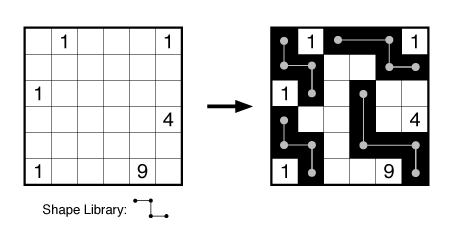
(No official times or solution entry for this week; just click “SOLVE?” when finished.)
Solution: Last page of PDF
Note: More Surf puzzles can be found in The Puzzlemasters’ Workshop.

